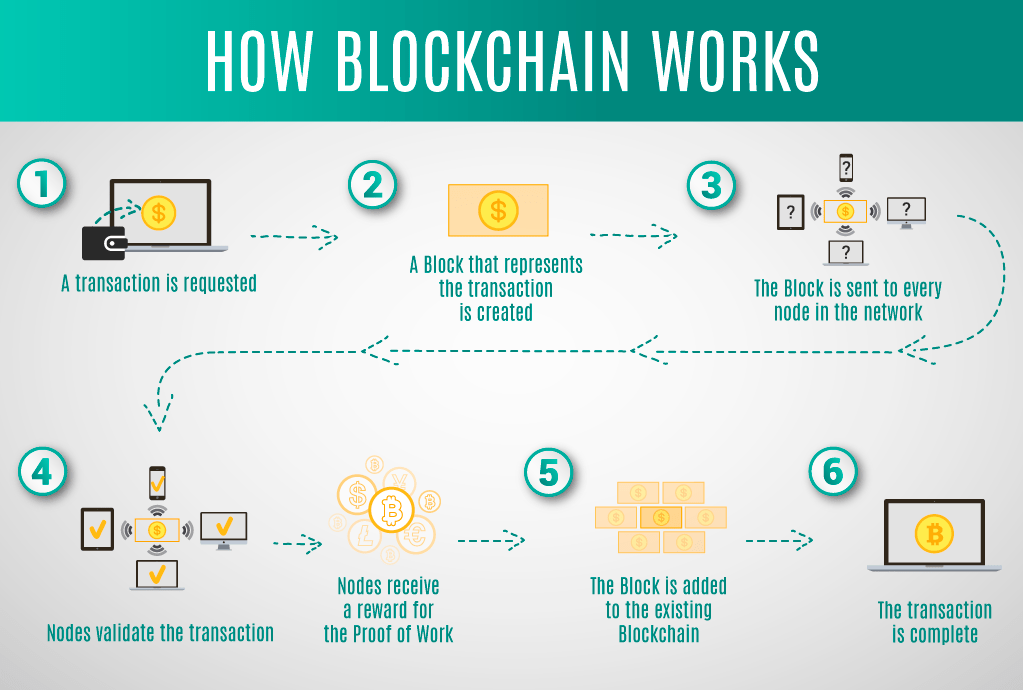Significant developments in the use of blockchain have occurred over the past year with applications across finance, supply chain, and healthcare, to name a few. As institutions have developed and deployed market solutions, the technology has gained momentum (as we noted in our 10 for 2017 report). However, until its use becomes widespread, blockchain will remain conceptual for most people, much akin to describing the internet before it became ubiquitous. So, what is blockchain exactly and can it be used to advance sustainability management?
What is blockchain technology?
Blockchain has been touted for its potential as a more secure and transparent database than existing centralized databases that are administered by a single authority (i.e., banks, government agency, etc). A blockchain can potentially be used to store any kind of data and ensure its integrity.
Technically, blockchain is distributed ledger technology (DLT) which uses encrypted digital ledgers to record and execute transactions. It is an iterative database where existing records can only be updated once there is consensus among all participants regarding the authenticity of a proposed change (called a consensus algorithm). These ordered records, or “blocks”, operate over a distributed peer-to-peer network and cannot be altered. This creates a distributed method of recording valid transactions.

Source: https://www.upgrad.com/blog/what-is-blockchain-how-to-create-networkcode-its-architecture/
Blockchains can be classified as either private or public (think of this like the internet vs. a corporate intranet). Public blockchains, such as Bitcoin, are accessible by anyone while private blockchains are permission enabled networks. In practice, a private blockchain offers advantages from a security and privacy perspective relative to a public one, since the latter offers some security (consensus protocol) but is less private.
Blockchain: The Sustainability Angle
What does this mean from a sustainability perspective? Given its features, blockchain can potentially be used as a tool to enhance ESG risk management in three key areas: supply chain transparency, data protection and energy efficiency.
Supply Chain Transparency
Since blockchain is a digital ledger, it can be used to record various characteristics of an input or product. For example, IBM is working with Walmart to implement traceability mechanisms into the company’s food supply chain. As part of Walmart’s pilot program, testing revealed that using blockchain reduced the time it took to trace a package of mangoes from the farm to the store to just two seconds from days or weeks.
The visibility that blockchain provides can help companies detect issues or risks faster and reliably trace the problem back to the source. This enables them to quickly initiate mitigation plans in case of quality issues.
Data Protection
Data protection features via a private blockchain offer three advantages: minimizing identity breaches, limiting data corruption and offering protection against cyberattacks. Given the growth in malware, ransomware and data breaches, these features are promising. Existing authentication systems rely on a centralized database for validation, such as matching a password against one that is stored in a database. Using blockchain, there is no centralized system holding keys that can be altered; instead each block carries validation keys, making it harder for hackers to compromise identities, manipulate data and infect systems with malware or ransomware.
Energy Efficiency
Energy-focused use cases include using blockchain as part of a microgrid where neighbors can buy and sell verified solar power. The blockchain platform captures all transactions and ensures they are valid.
Another use case is the management of electricity grids. Using IBM’s blockchain technology, renewable energy company Vandebron and Dutch national grid TenneT have set up a system to work with electric vehicle owners to make electricity from their car batteries securely available to the grid.
Blockchain and Sustainability: Potential Risks
Blockchain technology offers tangible benefits across a spectrum of functions, however, there are regulatory and operational risks to consider. For example, the fact that blockchain data is immutable could prove to be tricky under the European Union’s (EU) “right to be forgotten” rule, which has been in force since a 2014. The rule gives European citizens the right to have their information deleted from online databases. The EU’s Global Data Protection Regulation (GDPR), which comes into effect in May 2018, expands this rule to allow data to be deleted and prevent further processing of such data, even by third parties . Depending on the severity of non-compliance, companies found to be in violation of GDPR could face fines as high as 4% of global turnover or EUR 20 million, whichever is higher.
Another risk is the talent gap that exists due to the nascent nature of this technology. According to Forbes, there is a shortage of blockchain developers, signaling that even if companies want to capitalize on this opportunity, they may need to be mindful of human capital risks.
Energy use is also a potential concern. While blockchain can enable energy efficiency, depending on implementation, a blockchain may need a growing network of servers and data centers to function, which can be energy intensive. For example, Bitcoin transactions are estimated to have used around 30 TWh in 2017, exceeding the energy used by all of Ireland at 26 TWh. (The high level of energy used for Bitcoin transactions is in part driven by its nature as a cryptocurrency, and thus the high number of transactions.) These are just a few of the issues that companies and investors need to keep in mind as they consider the value proposition of blockchain.
Recent Content
Six Best Practices Followed by Industries Leading the Low Carbon Transition
In this article, we take a closer look at the leading industries under the Morningstar Sustainalytics Low Carbon Transition Rating (LCTR) and examine the best practices that have allowed them to emerge as leaders in managing their climate risk.
Navigating the EU Regulation on Deforestation-Free Products: 5 Key EUDR Questions Answered About Company Readiness and Investor Risk
The EUDR comes into effect in December 2024, marking an important step in tackling deforestation. In this article, we answer five key questions who the EUDR applies to, how companies are meeting the requirements, and the risks non-compliance poses to both companies and investors




-5-key-questions-answered-about-company-readiness-and-investor-risk.tmb-thumbnl_rc.jpg?Culture=en&sfvrsn=ee2857a6_2)